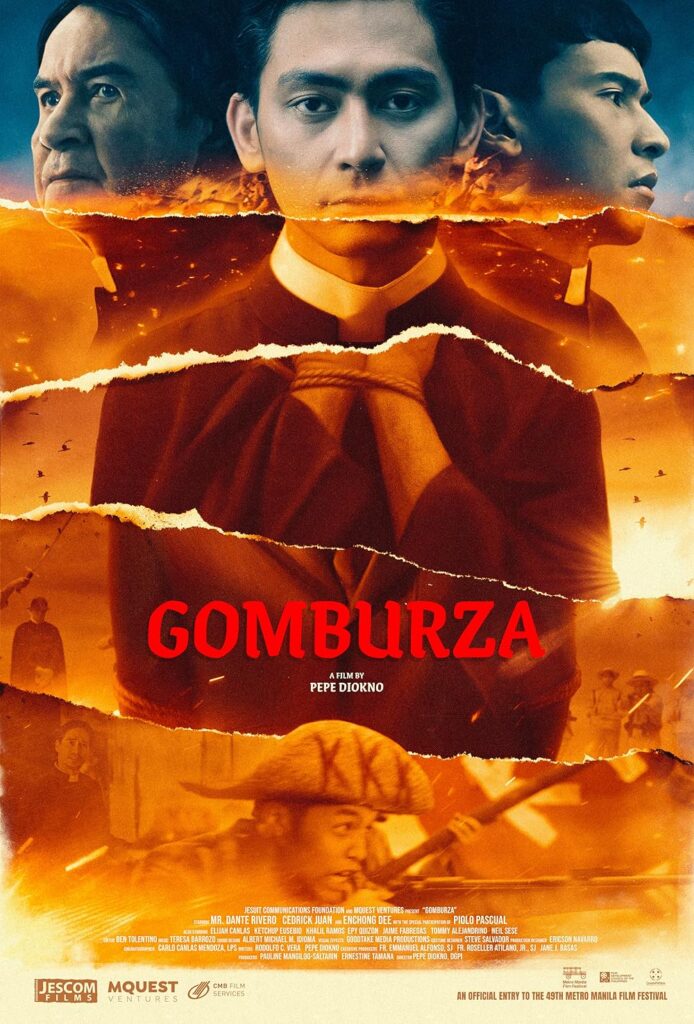One should not expect a biographical drama in Pepe Diokno’s GomBurZa. The film is not a portrayal of the three famously executed Filipino Catholic priests — Frs. Mariano Gomes, Jose Burgos and Jacinto Zamora — but focuses on what led to the trio’s death by garrote in 1872 in Bagumbayan, and the result of this public execution.
Why were they executed, you ask? The film simply gives us the answer. No more, no less. Such is one of the triumphs of this film — it never deviates from its objective.
The film takes us back to the 1800s within the Catholic Church in the Philippines. There is racial discrimination going on: Native Filipino priests (seculars) are refused promotion. They are not allowed parish assignments, or greater ranks, simply because they are not peninsulares (Spaniards born in Spain).
So here comes our tragic hero — the young and impassioned mestizo Catholic priest, José Burgos (a competent Cedrick Juan). He is the story’s central character, and the film immediately shows us the ways he is dangerously championing political and ecclesiastic reforms, for seculars to be treated as equals to the peninsulares.
The movie wastes no time and jumps right into Burgos’ fight for the rights of Filipino native priests to head parishes over that of Spanish frayles, who are also hindrances to the natives in accessing better education (i.e. progress).
The story never veers away from Burgos’ cause. Hence, the movie is naturally packed with conversations, plans, trials and discussions of his advocacy.
Diokno captures all of this in a straightforward Spielbergian manner somewhat similar to Lincoln (2012), or Tom McCarthy’s procedural Spotlight (2015). He also adds a Hitchcockian touch when he utilizes Dutch angles for scenes simmering with anxiety.
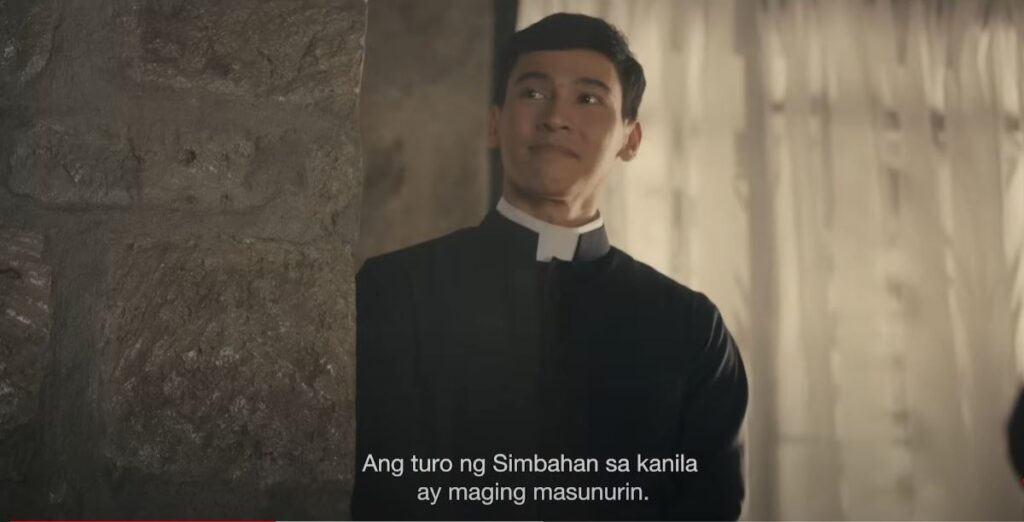

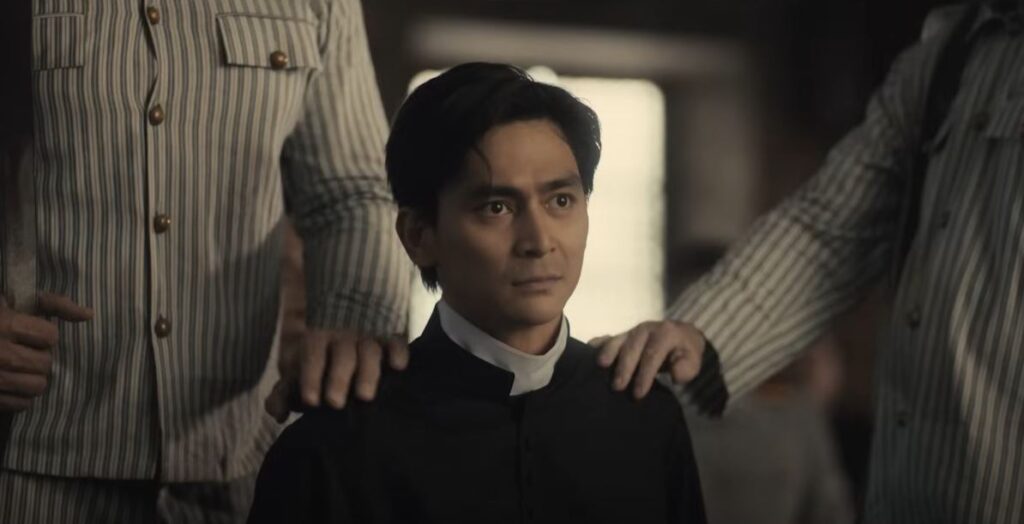
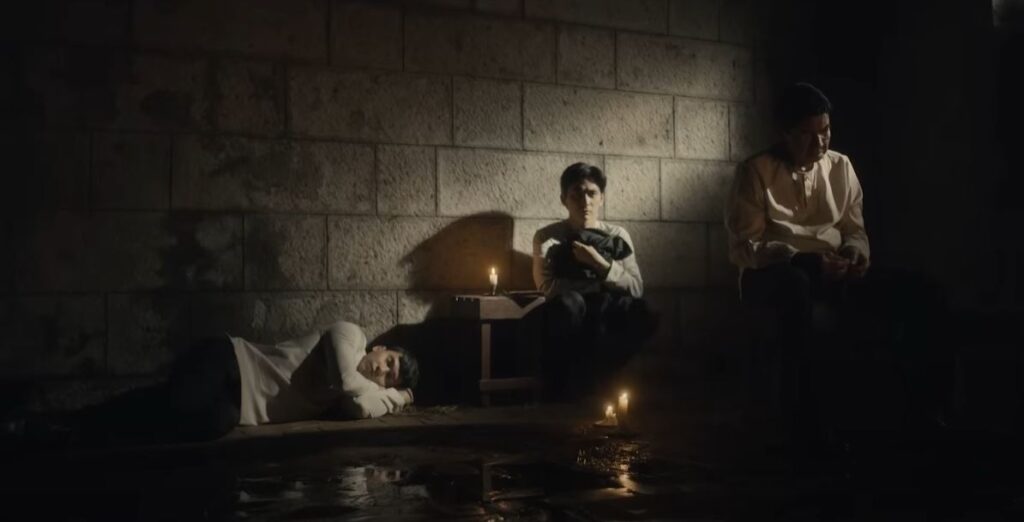
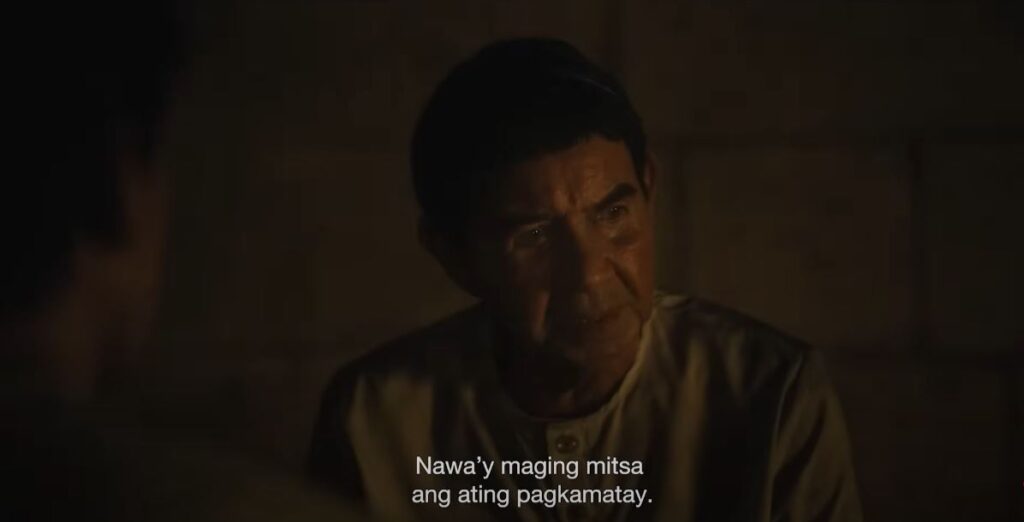
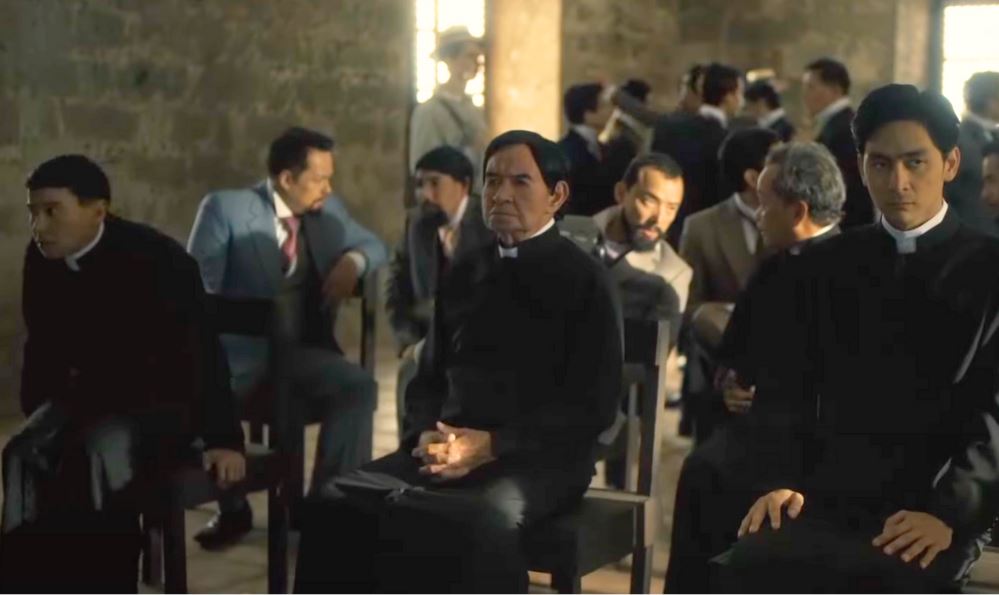
Diokno also provides us a necessary glimpse into the colonizers’ perspective of Burgos’ moves. The Spanish authorities see the priest’s secularization fight as an elaborate conspiracy that involves educated Filipino natives, clergymen and laymen, both in Manila and Cavite.
Worse, Spanish authorities shockingly decide — without proper investigation — that the clergymen’s secularization fight is connected to the 1872 Cavite Mutiny, led by the mestizo Fernando La Madrid (Arnold Reyes).
Diokno manages to achieve authenticity in the proceedings of this fact-based story, though he may have been too careful in avoiding melodrama that the battle for secularization sometimes lacks grip and tension.
But this is more than compensated for by his assured and meticulous direction, his mastery of his own visual language, and his and co-writer Rody Vera’s precise and economical screenplay — enhanced by topnotch performances from the entire cast, who speaks fluent Spanish and Latin.
Piolo Pascual is luminous in his portrayal of Pedro Peláez, the diocesan administrator of the Archdiocese of Manila, and Burgos’ major inspiration in the secularization movement. Enchong Dee as Jacinto Zamora also gives a trenchant performance as the purely innocent priest dragged into the Spaniards’ false accusation.
Carlo Canlas Mendoza’s cinematography is breathtaking, tastefully and consistently using natural light throughout the film, which culminates in the breathtaking magic-hour execution day, laced by Teresa Barrozo’s beautiful subtle scoring.
There is one profound scene where Burgos, Mariano Gomez (Dante Rivero) and Zamora are bracing for their execution behind bars. This is the first time we see Gomburza together — the portmanteau in the flesh.
Diokno provides us enough time to dissect their psyche, where we find the three at their rawest mental and emotional state, mortals who suddenly find themselves in a terrifying place. Rivero’s Gomez shines here as an old man full of wisdom, calming the hysterical Burgos. The script also injects some foreshadowing, which adds to the cinematic drama of it all.
Diokno stages the dreaded execution with power. As each priest goes up the platform backdropped by the setting sun, their black cassocks whipping in the wind, it is soul-stirring. This is the moment where you get the title of the movie. This is not about the personalities of Gomburza, but the “Gomburza effect” — the significance of their deaths in sparking our quest for national identity.
Compact, taut and intelligent, GomBurZa is an applaudable achievement in Philippine cinema.
4 out of 5 stars / In cinemas from 25 December to 7 January as part of the 2023 Metro Manila Film Festival
